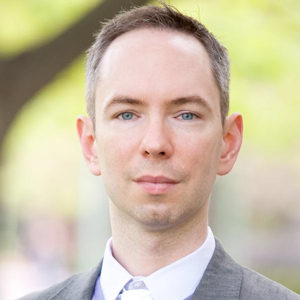by Jeremy Reynolds

The program, under the direction of Gregory Ristow, will include Harrison Birtwistle’s Entr’actes and Sappho Fragments, as well as Oberlin Professor of Composition Stephen Hartke’s Tituli.
Ristow is now in his second year as director of vocal ensembles at the Conservatory. An Oberlin alumnus, he earned his doctoral of musical arts in conducting from the Eastman School of Music.
Ristow also conducts the Interlochen Singers and has previously led the Houston Foundation for Modern Music, and the Voices chamber choir in Rochester.
We caught up with Ristow by phone recently to discuss the upcoming performance and learn more about the program.
Jeremy Reynolds: Contemporary music seems to be a forte of yours. Can you describe Birtwistle’s Entr’actes and Sappho Fragments?
Gregory Ristow: The piece began as just Entre’actes and was composed for trio: flute, viola, and harp. Then it grew into Entre’actes and Sappho Fragments. At that point Birtwistle expanded it by adding oboe, harp, percussion, and voice.
JR: That’s some unusual instrumentation. How does Birtwistle exploit such a unique sound palette?
GR: He pairs voices and instruments in almost every combination. You hear fascinating timbral effects in each movement which are really wonderful.
JR: What about the text setting?
GR: He’s really focused on the idea of fragmentation. Most of Sappho’s poetry has survived in fragments. Sometimes you can make sense of them and other times you can’t. The text is drawn out over a long timeframe — for instance with the word ‘wheel,’ first you hear ‘whee…’ and then about five seconds later you hear the ‘eel.’ When you just hear glimpses of a word or two here and there, it’s very hard for a listener to connect and understand them.
JR: What are the difficulties in singing this piece?
GR: The singer has to pull tons of notes seemingly out of the air in some of the songs. In others, the vocal line is basically doubling the flute. Our soprano, Katherine Lerner Lee, is doing wonderfully at that. When I do modern music with singers, I’m often a little panicked about whether they will sing the right note at the right time, but she’s rock-solid.
JR: Why did you pair the Birtwistle with the Hartke?
GR: I started with the Hartke. He’s on faculty at Oberlin as well, and I was thinking about what would pair well with Tituli. All of the texts from the piece date from 500 to 100 B.C.E., so I was looking for something else that pairs old text with music, and the Sappho Fragments came to mind.
JR: Are there any other similarities between these two works?
GR: They work nicely together in a number of ways. They’re both very fragmentary texts. Tituli translates roughly to “inscriptions,” or “titles,” and basically the texts all survive as inscriptions on various objects. The first movement, “Lagos Niger,” literally means “Black Stone.” It’s a text fragment carved into a bit of calcium carbonate. Others are inscriptions on small, portable objects: “Callus gave this mirror to his mother as a gift,” or “Lucillius made this for me.” Little, almost meaningless sentences. So the logic behind pairing these two pieces was their very different approaches to setting ancient text fragments.
JR: Does the fragmentary nature of the texts preclude text painting?
GR: No, there’s certainly text painting in both pieces and a lot of close relationships between the texts and the music. Sometimes you just have a syllable here or there, enough to know that this is some sort of religious or legal text, that this is very serious. Sometimes all you get is an “ahhhh,” but you get the character. I think the text painting is more obvious in places like the fourth movement of Tituli, an epitaph for a child who died. It’s a lament that Hartke sets like a Baroque Sarabande. It has that classic, Baroque lamentation feel to it, which is a perfect complement to the text.
JR: Tituli also has unusual scoring: three tenors, countertenor, baritone, violin, and two percussionists.
GR: The piece was written for the Hilliard Ensemble, which was one of the defining early music vocal ensembles at the end of the 20th century, so that’s where the five-voice setup really came from. A lot of this piece is a cappella, which is terrifying for any singer. You’ll sing a final chord in, say, A major, and then the marimba will come in on the same chord you’d just sung — hopefully.
JR: How does he use the instruments?
GR: The instruments are largely atmospheric, but they also play an interjectory role. The violin tends to appear in transitions between sections of text or texture. The percussion, especially marimba, most often plays at the same time as the voices and sometimes even doubles the bass line.
JR: It sounds like a fascinating concert.
GR: Everyone is a student except the countertenor, Joseph Schlesinger, who is a professional singer, and everyone is sounding really fantastic. It’s going to be a great performance.
Published on ClevelandClassical.com February 21, 2017.
Click here for a printable copy of this article



